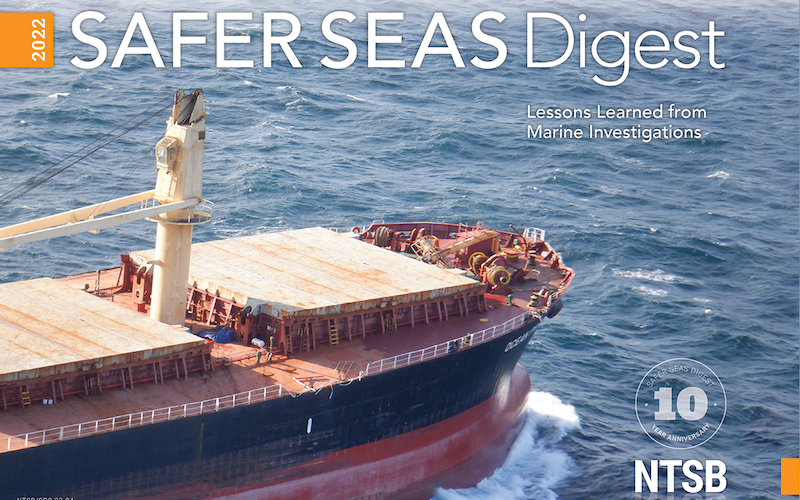The marine industry has put a premium on safety over the last decade. Nevertheless, there have been several high-profile marine incidents in recent years.
In November, the National Transportation Safety Board (NTSB) released its most recent Safer Seas Digest.
Safer Seas Digest 2022, released in October 2023, highlights the critically important lessons learned from marine investigations last year. The 2023 edition won’t be published until later this year.
The 2022 edition provides analysis into 29 maritime casualties: two capsized vessels, three collisions, seven contacts made, nine fires/explosions, one flooding/hull failure, six groundings/strandings, and one vessel that experienced machinery damage.
One of the fatal incidents covered was the capsizing of the liftboat Seacor Power, which claimed 13 lives. Bad weather played a major role in the disaster.
“With every investigation, our mission is the same: to determine what happened, how it happened, and issue evidence-based recommendations to prevent similar events from occurring in the future,” NTSB Chair Jennifer Homendy, said in the Safer Seas Digest for 2022.
On April 13, 2021, the 167'×103'×9' liftboat Seacor Power capsized about seven miles off the coast of Port Fourchon, La., in a severe thunderstorm. The boat was en route to an oil and gas lease block in the Gulf. Despite the National Weather Service issuing a Special Marine Warning that included the Seacor Power’s location, the vessel did not receive the warning.
That afternoon, the liftboat encountered a rain squall with wind gusts reaching 80 knots. In an attempt to anchor the vessel in place by “soft tagging” the bottom, the mate suggested lowering the 265' legs. During this maneuver, the mate turned the Seacor Power into the wind to reduce its speed. As the vessel turned, the winds shifted from the liftboat’s stern to the port beam, causing the liftboat to heel to starboard and ultimately capsize. It came to rest on its starboard side in 50' of water. The vessel, valued at $25 million, was declared a total loss.
The probable cause of the liftboat’s capsizing was a loss of stability triggered by severe thunderstorm winds exceeding the vessel’s operational wind speed limits. The speed and angle at which the vessel capsized, along with the adverse weather conditions, made rescue efforts challenging and contributed to the loss of life. In addition, a communications breakdown kept the boat from receiving the NWS’s Special Marine Warning.
The Coast Guard’s Marine Board of Investigation issued 27 safety recom- mendations, four administrative recommendations, three findings of concern, and 16 best practices following its probe of the accident.
In the past two editions of the Safer Seas Digest, the NTSB has continued to make life-saving recommendations to the Coast Guard and others advocating the use of personal locator beacons.




